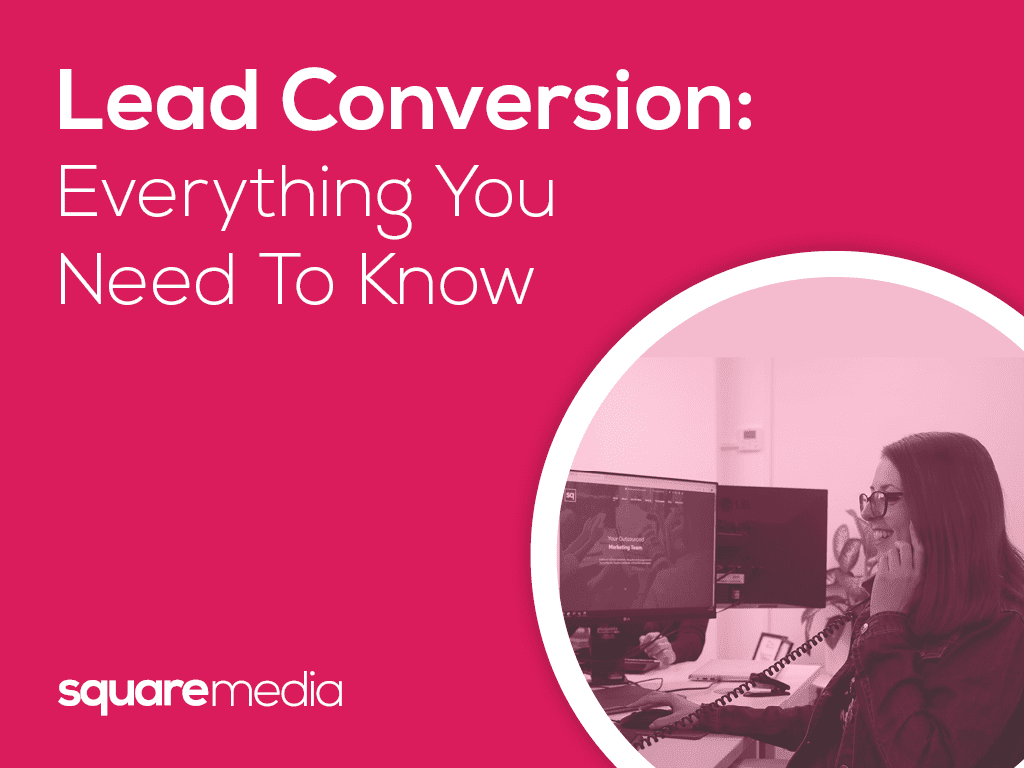
Lead Conversion: Everything You Need To Know
Are your leads turning into sales? Lead conversion plays a considerable part in many businesses, but it can be a little overwhelming if you are unsure how to build or calculate a process. We’ve put together a guide to help you successfully carry out the lead conversion process and ultimately grow your business. Understanding your target audience’s behaviours is essential to creating a reliable strategy. This can help you to fulfil your leads into conversions.
What is Lead Conversion?
Lead conversion is a marketing and sales process that converts leads into customers through nurturing tactics like retargeting and email marketing.
How to Calculate your Lead Conversion Rate
When you’re analysing the success of your campaign, you may want to calculate your lead conversion rate (LCR). This is the percentage of leads that turned into conversions.
It’s straightforward to calculate a lead conversion rate; all you need to do is take your total number of conversions divided by your total number of leads and multiply it by 100, which will leave you with the lead conversion rate.
How to Build a Lead Conversion Process
Now that you know what a lead conversion rate is and how to calculate it, you can start to build a lead conversion process, or sales funnel, to push customers closer towards making a purchase.
Getting information
You need to start by gathering information on your current leads. You want to collect information on the source, industry, company, number of employees, and pain points. This will help you to build a strategy in the future.
Identify High–Intent Behaviours
You need to identify high-intent behaviours to discover what stage in the process potential customers are at. Look at what website pages they visit; if they look at a product or pricing page, they are much further along than someone who visits your blog page, industry news or meet the team pages. Ultimately, it is up to your sales team to decide what they class as high and low intent behaviours. Once you have found those behaviours, you’ll be able to act accordingly, allowing you to take the next step by sending retargeting emails, creating social media posts and even blog posts.
The Service Level Agreement
A service level agreement is a contract that states the outcomes both teams have agreed to provide. For example, the marketing team offers potential customers, and the sales team turns them into paying customers. Service level agreements are typically used between the company and client, but they are also valuable for use between different departments in the company. You can use them between the sales and marketing teams to make sure both parties understand what is needed.
Create a Lead Conversion Path
Once you’ve found your high-intent behaviours, you’ll be able to create a path that leads potential customers to them. For example, you could follow up potential leads by sending out emails containing marketing offers and strong calls to action to convert leads into sales. You need to remember that every lead is different but to save time, effort and money, you can create releases such as marketing offers from triggers, as explained below.
Lead Conversion Strategies
So once you know the high-intent behaviours you would like your customers to carry out, you can start to put lead conversion strategies into action using tools such as email automation and retargeting ads.
Automation:
If a potential customer is on your website looking at your pricing page or contact us page, this would be a good time to email them offering a discount or a free demo. They’re close to completing this conversion, so providing offers at this stage is perfect for helping them to complete the purchase. Automated, customised emails will have a personal feel to make customers more likely to complete the purchase. This could be one of the last stages of nurturing the lead before they convert. Keeping in contact with customers keeps your brand in the front of their mind. You can use triggers to push out emails when they reach a specific page on your website, pushing them toward making a purchase. You could use lead scoring to set these triggers so that when their score comes to a certain number, they’ll automatically get sent an email.
Analytics:
The best place you can start to look at when analysing user behaviour is Google Analytics. When are your potential customers dropping out? Are people adding products to their baskets but ultimately not buying them, giving you a high cart abandonment rate? (Cart abandonment is also a great trigger for sending out an email prompting people to complete their purchases.) By doing this, you’ll understand why they’re not converting. Are your products priced too high? Was a web page on your website potentially misleading to them? You may need to try different things and give it time to see results, but if you are consistent, you will get results. You could also use heatmapping or conversion rate optimisation (CRO) tools like CrazyEgg to gain more insight into how visitors are using your website and how to optimise it for increased sales.
Our Sales and Marketing Director, Steve Rees, has been developing expert sales strategies for multiple years for businesses in many different industries.
Why not book a consultation with Steve if you need help building a lead conversion process?
If you need help creating a winning marketing strategy and plan, why not sign up for our ‘Marketing Plan In A Day’ workshop on October 26th. Find out more or book your place here.

